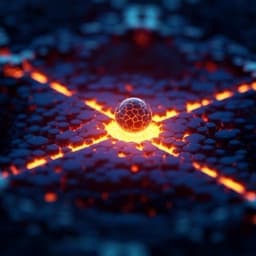
Engineering and Technology
Production of gas-releasing electrolyte-replenishing Ah-scale zinc metal pouch cells with aqueous gel electrolyte
F. Wang, J. Zhang, et al.
Discover the innovative 'open' pouch cell design for aqueous zinc batteries, which addresses critical issues like hydrogen gas evolution and electrolyte loss. This groundbreaking research, conducted by Feifei Wang and colleagues, showcases a gel electrolyte that enhances performance, achieving impressive discharge capacity and longevity in cycling.
~3 min • Beginner • English
Related Publications
Explore these studies to deepen your understanding of the subject.







